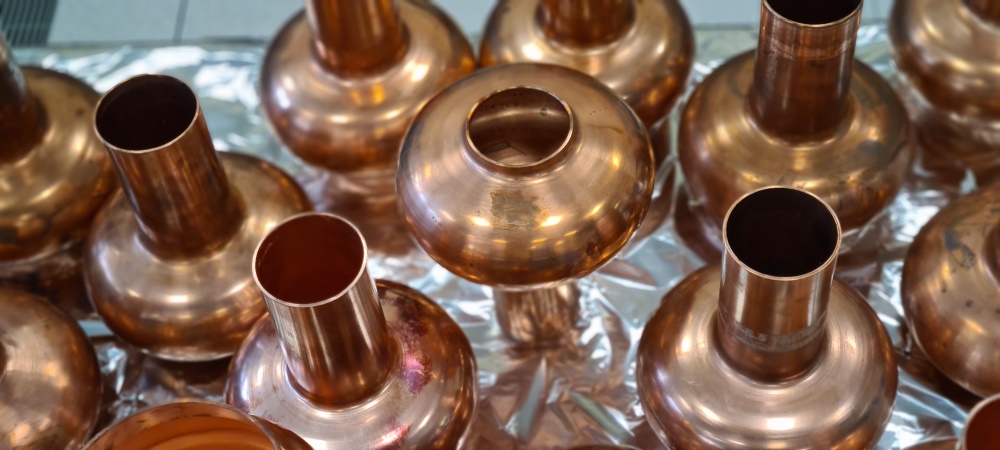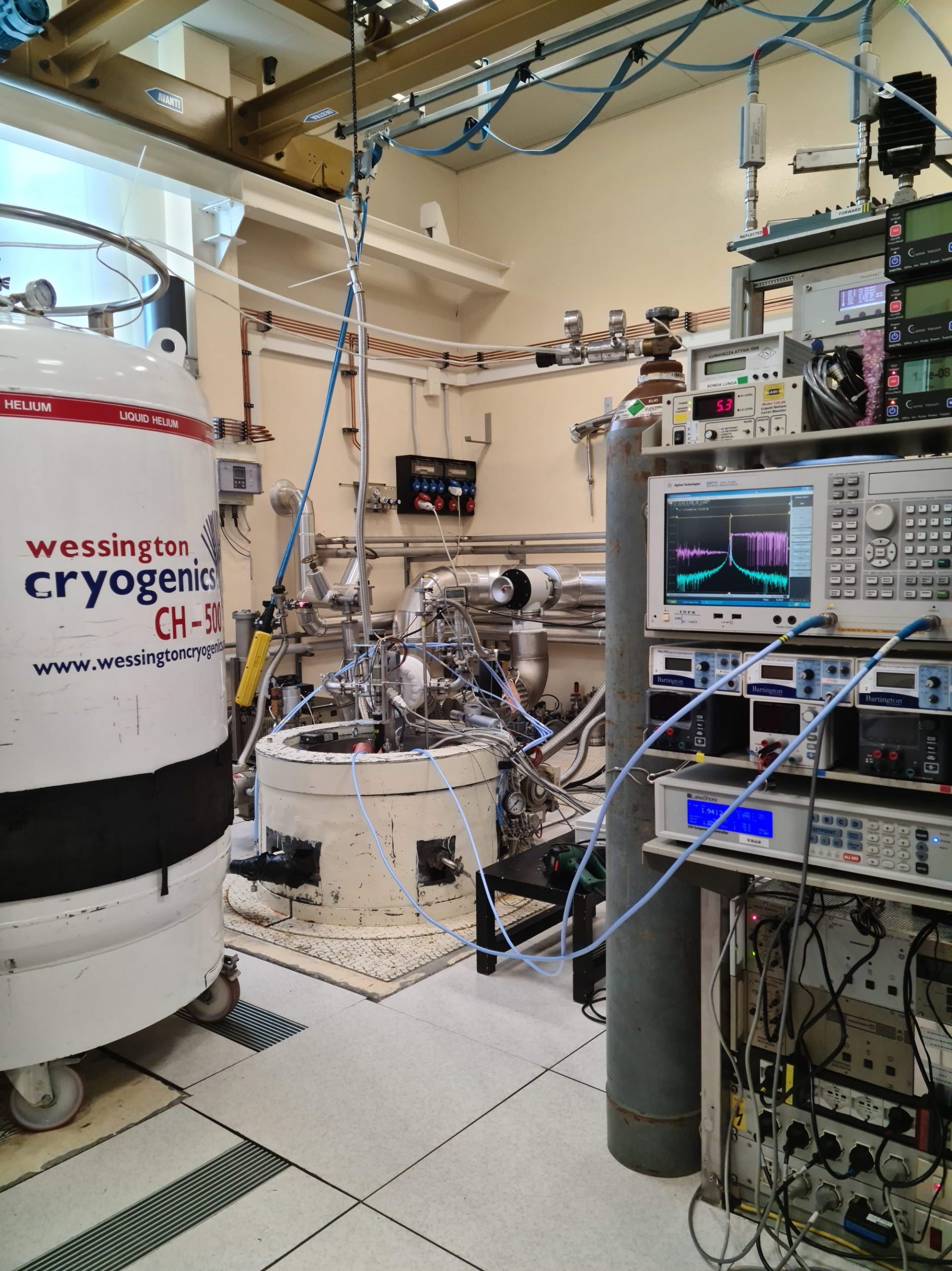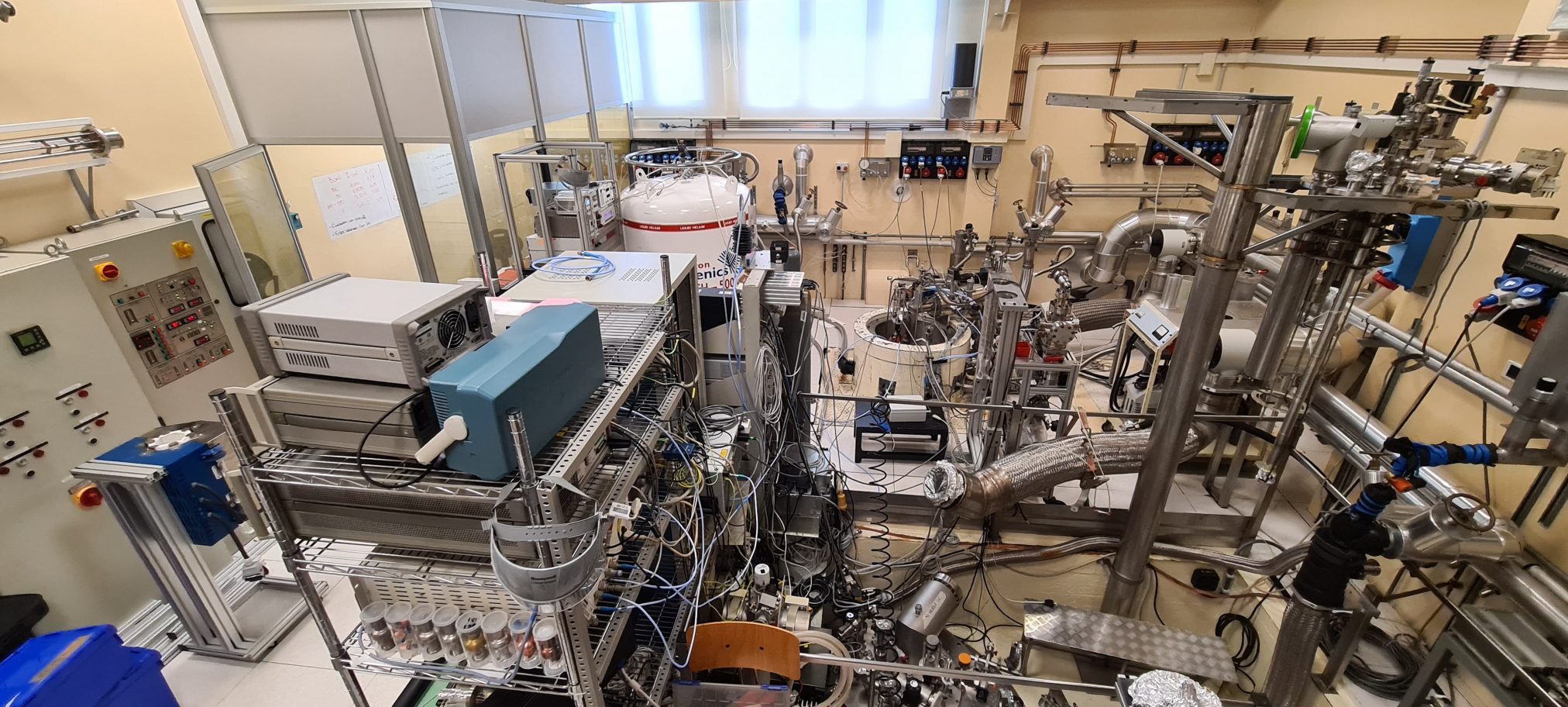
Cryogenic facility at our service
The cryogenic laboratory was born with the development of the radiofrequency cavities for the LNL linear accelerator ALPI in 1996. The SRF cavities (superconducting radiofrequency cavities) are the devices responsible for the acceleration of the particles in a particle accelerator. They accelerate the particles thanks to an electric field that changes harmonically in resonance in order to use all the power in an efficient way. The superconducting materials are use in order to decrease the power consumption in the particle accelerators and to reach powers that wouldn’t be possible with conventional materials.
All the Research and development in the framework of the SRF cavities has been used for different industry applications and fields. For years, the material science and technology service at Legnaro National Laboratories has been a pioneer in the SRF cavities field. From the manufacturing of quarter wave resonators (QWR) to elliptical cavities of different frequencies using innovative techniques such as deep drawing and spinning to accomplish the high standard requirements that a particle accelerator demands.
This laboratory not only focus on the cavities manufacturing but also in the development of coatings that allow to profit the novel properties of superconducting materials at a lower cost. Instead of using a bulk superconducting material, the specialty of this lab is to coat copper SRF cavities with a superconducting material like Niobium with a thin of thick layer (few or tens of micrometers). The niobium on copper SRF cavities has been an important part of the field since the 90’s.
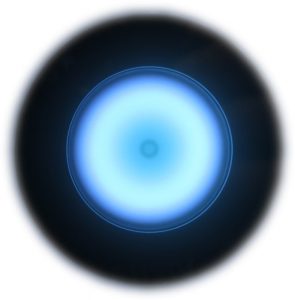
Our lab is in constant collaboration with international laboratories all over the world. The importance of these collaboration was evident with the contiguous work for the development and production of the SRF cavities for the ISOLDE accelerator for heavy ions at CERN.
The cryogenic laboratory gives its name to the low temperatures measurements that are developed there needed for the characterization of superconducting materials. The work in this lab is focus on RF superconducting cavities of different frequencies and shapes for particle accelerators. The laboratory is equipped with two cryostats (vessels with liquid helium) that allow us to characterize the cavities by their performances under a RF signal. In other words, how much energy is loss in the superconducting material.
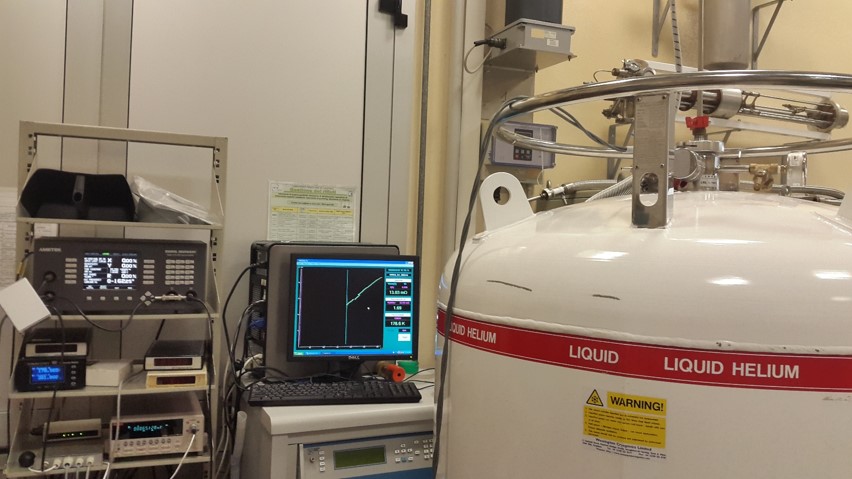
The cryo lab the capability to produce superconducting coatings (such as Nb, NbTi, NbN, Nb3Sn, etc) in cavities and in different geometries by magnetron sputtering technique.
The lab also counts with the instrumentation to measure superconducting properties like critical temperature and RRR (residual resistivity ratio).

